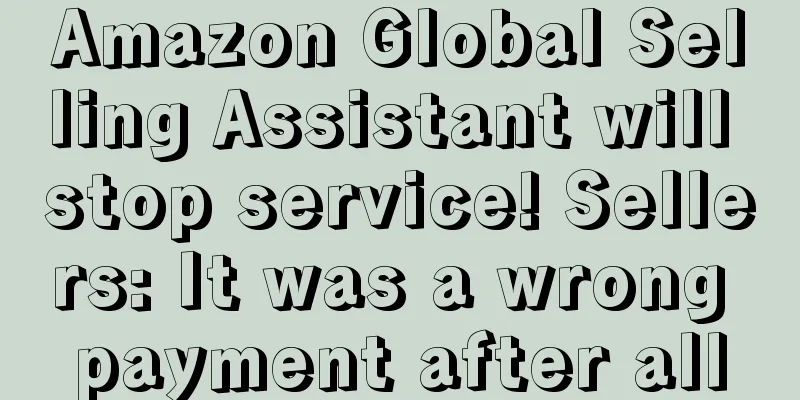How to use the FBA calculator

|
Shipping through FBA has many benefits for sellers, including the ability to obtain the Prime badge and access to Prime members; the possibility of obtaining the Buy Box, fewer logistics delays that affect seller ratings, and better display of the seller's brand. Since FBA has so many benefits, how is the fee calculated? FBA fees include fulfillment, monthly storage fees, and warehouse inventory placement service fees for each product. Sellers will need to pay fulfillment fees based on product size and weight. The fee standards are as follows:
The following is an example calculation:
If you are selling a set or group of products, then it can only be calculated as a single ASIN, but the larger package size will result in higher FBA fees. If your products are in Amazon warehouses for too long, you may be charged long-term storage fees. Here are the latest details of Amazon’s long-term storage fees (you can click here for more detailed updates): On the 15th of each month, Amazon FBA will clean up the inventory. If the seller's inventory has been stored in the Amazon logistics center in the United States for 181 to 365 days, the long-term storage fee (LTSF) will be $3.45 per cubic foot. Products that have been in the logistics center for more than 365 days will be charged a long-term storage fee of $6.9 per cubic foot. *Note : Long-term storage fees are subject to change at any time, and the best way to stay informed of policy updates is to check the FBA fees page on Amazon.com. Step 1: Calculate the total cost of each product To determine if your product is a good candidate for FBA, you need to calculate the total cost of each product. Add up the following expenses, while also considering the costs of running your business: 1) Purchase cost: Cost of purchasing inventory The cost of shipping the product from the supplier to the designated location The cost of shipping the product to an Amazon fulfillment center 2) Return-related costs ·transportation ·Package ·Price reduction promotion 3) As a seller, you need to make a list of the expenses required to run your business, including: Operating costs ·Water and electricity costs Employee wages + benefits ·Insurance Business trip expenses ·Tax Marketing expenses Web Development Warehousing ·Rent, etc. Once you understand these costs and set the profit margin you want to achieve, you can know the total revenue for each product. Step 2: Divide the total cost by the number of products Once you've calculated the total cost of all of your individual products, divide that number by last year's sales volume to get the cost of each product. Step 3: Enter your data into the Amazon Seller Fee Calculator in Seller Central The Amazon FBA calculator is located in the "All Statements View" area. Enter the product you want to measure, then fill in the product price, the cost of sending to the Amazon warehouse, and the product cost, and then click to calculate:
Step 4: Decide Which Products Are Best for FBA Shipping Once you have the data, ask yourself the following questions: How much does each product cost in a month? Does the fee paid exceed 30% of the product cost? If you spread the cost across each product, can you still make money on that SKU? For a large and heavy product priced at $10, FBA fees may account for a large portion of the cost, while the FBA fee ratio for a small and light product priced at $30 will be much smaller. Therefore, products with a relatively high average selling price are the first choice for FBA shipments. In addition, popular products that can be sold quickly are also very suitable for FBA shipments. To achieve the best results, sellers should minimize returns and choose not to ship certain SKUs or products that are not profitable through FBA. Text ✎ Mary/ Statement: When reprinting this article, the title and original text must not be modified, and the source and original link must be retained. |
<<: How to combine Facebook ads and email marketing to increase conversion rates
Recommend
US online sales will reach $240.8 billion from November to December, and prices of electronics and other categories have fallen in October
Adobe recently released a US e-commerce price data...
What is Huahan Logistics? Huahan Logistics Review
Shenzhen Huahan Hongyun International Freight Forw...
Title: Updated! Summary of key VAT knowledge for 12 European countries in 2022 (including free VAT benefits)
VAT has always been the most concerned issue for E...
10.5 Amazon Peak Season Toy Sales Guide! These requirements must be read by sellers!
The 2021 "holiday sales season" is just...
Refusing to use TikTok to smear the public! Shein denies rumors of closure in the US
In February this year, Shein was accused in the Un...
Second-hand e-commerce layout offline entity! Mercari will launch its first pop-up store
It is learned that according to foreign media repo...
Amazon's peak season storage fees are doubled! Balance becomes negative...
Black Friday and Cyber Monday are coming, and ev...
Amazon launches limited-time free service again! Official intervention disrupts the EU agency industry
Recently, Amazon released a new announcement, sayi...
Barbie has made a lot of Amazon products popular, and sellers are relying on "riding on the popularity" to increase orders!
The movie "Barbie" has become a global h...
Canada drafts a C$150 billion tariff list to fight back against Trump administration's new tariff policy
It is learned that recently, according to foreign ...
What to do if FBA products are damaged? Here’s a step-by-step guide to get compensation back from Amazon!
Step 1 - Click Fulfillment under Reports in Selle...
What is Favo? Favo Review
Favo is a Brazilian social networking platform fou...
Pinduoduo becomes Amazon's source of goods? 60 people involved in the case, cross-border fraud dens were cleared!
▶ Video account attention cross-border navigation ...
The impact of the Shanghai epidemic outbreak on the United States: West Coast port congestion worsens!
<span data-shimo-docs="[[20,"获悉,近日全球采购和供应链...









